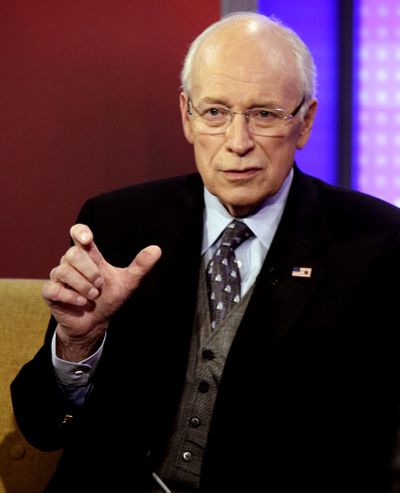Cheney receives heart transplant
Ex-vice president had first heart attack at 37

WASHINGTON – Former Vice President Dick Cheney had a heart transplant Saturday, after five heart attacks in 32 years and countless medical procedures to keep him going. Cheney, 71, waited nearly two years for his new heart, which came from an unknown donor.
An aide to Cheney disclosed the surgery after it was over and said the ex-vice president was recovering at a Virginia hospital.
“Although the former vice president and his family do not know the identity of the donor, they will be forever grateful for this lifesaving gift,” aide Kara Ahern said in a statement.
Cheney was recovering Saturday night at the intensive care unit of Inova Fairfax Hospital in Falls Church, Va.
More than 3,100 Americans currently are on the national waiting list for a heart transplant. Just over 2,300 heart transplants were performed last year, according to the United Network for Organ Sharing. And 330 people died while waiting.
According to UNOS, 332 people over age 65 received a heart transplant last year. The majority of transplants occur in 50- to 64-year-olds.
The odds of survival are good. More than 70 percent of heart transplant recipients live at least five years, although survival is a bit lower for people over age 65.
The former vice president suffered a heart attack in 2010, his fifth since age 37.
That same year he had surgery to have a small pump installed to help his heart keep working.
Called a left ventricular assist device, or LVAD, that device took over the job of the heart’s main pumping chamber, powered by special batteries worn in a fanny pack. It helps a person live a fairly normal life while awaiting a heart transplant, although some people receive it as permanent therapy. It was one of the few steps left, short of a transplant, to stay alive in the face of what he acknowledged was “increasing congestive heart failure.”
In January 2011, Cheney said he was getting by on the battery-powered heart pump, which made it “awkward to walk around.” He also said he hadn’t made a decision yet on a transplant, but that “the technology is getting better and better.”
Cheney said then that he’d “have to make a decision at some point whether I want to go for a transplant.”
In 1988, he had quadruple bypass surgery, two artery-clearing angioplasties and the operation to implant a pacemaker, a device that monitored his heartbeat.
In July 2007, he had had a minor surgical procedure to replace the pacemaker.
Like 5 million other Americans, Cheney has had congestive heart failure, meaning his heart had become too weakened to pump properly. That can happen for a variety of reasons, but Cheney’s was due to cumulative damage from his multiple heart attacks.